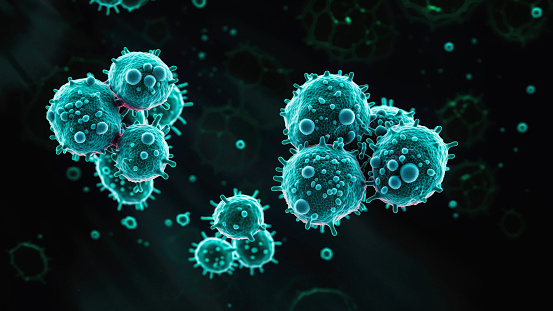
Ongoing fundamental research on cancer cells could be used to create new drugs and therapies that fight the spread of cancer cells.
The work of Dr. Tanmay Lele, joint faculty in biomedical and chemical engineering, and chemical engineering Ph.D candidate Ting-Ching Wang proves that the mechanical stiffness of tissue can alter the fate of tumor cell populations.
Their research has been published in The Proceedings of the National Academy of Sciences. It examines how the mechanical stiffness of the extracellular matrix (ECM), a network of proteins that surrounds cells and tissues in the body, impacts tumor development.
“Tumors evolve through a process of mutation and selection, driven in part by changes in the tumor’s ECM. One key feature of this changing ECM is that its stiffness becomes progressively altered in tumors, which is why many solid tumors are detected initially as stiff lumps. We investigated whether changes in ECM stiffness can impose selective pressure on tumor cells,” Wang said. “If we can understand how tumor cells adapt to the changing ECM, then we can come up with better treatments targeted at those cells which are fittest for the changed ECM.”
Wang believes that the high genetic variation from cell to cell is the reason that cancer is so difficult to treat.
If we can understand how tumor cells adapt to the changing ECM, then we can come up with better treatments targeted at those cells which are fittest for the changed ECM.
“Whenever the environment of the tumor changes, variant cancer cells best adapted to the changed environment outcompete the rest of the cells and over time, dominate the population,” Wang said. “Our research has focused on the unique properties of these variant cells.”
In their research, Lele and Wang employed an experiment to study the response of genetically variable cancer cell populations to altered ECM stiffness. What they found was that some variant cells dominated the population over several weeks.
“When we first analyzed these variant cells, we found that they were extremely migratory,” Lele said. Cancer spreads to other parts of the body through aggressively migrating cells, and so our findings suggest that altered ECM stiffness may select for migrating cells.”
The team’s next stage in the research will seek to directly observe the selection of variant cells under the microscope, Wang said.
“Our studies are shedding light into the fundamental dynamic changes that occur during cancer development,” Lele said. “Cancer is a very difficult disease that we’ve been trying to treat for decades. We hope to better understand how tumors evolve and develop, in order to improve therapies that target these evolving tumors.”